Business Decision-Making and Complex Thinking: A Bibliometric Study
Abstract
1. Introduction
2. Theoretical Framework
2.1. Decision-Making in Business Training
2.2. The Competency of Complex Thinking
2.3. Bibliometric Studies
3. Materials and Methods
3.1. Research Questions
3.2. Inclusion and Exclusion Criteria
3.3. Descriptores
3.4. Data Collection and Analysis
3.5. Data Representation
4. Results
4.1. RQ1. Do the Studies Address the Relationship between Complex Thinking Competency and Business Decision-Making?
4.2. RQ2. Do Studies Address the Relationship between Business Decision-Making and Any of the Sub-Competencies of Complex Thinking?
4.3. RQ3. To Which Sub-Competency of Complex Thinking Is Decision-Making in Business Usually Related?
4.4. RQ4. What Is the Annual Production Discovered by the Established Search Chains? (What Is the Amount of Published Material on Competitive Business Decision-Making?)
4.5. RQ5. Which Institutions Have Produced the Most Products on Business Decision-Making Related to the Complex Thinking Competency and Its Sub-Competencies?
4.6. RQ6. Which Countries Have the Largest Number of Papers Published That Address Business Decision-Making with the Complex Thinking Competency or One of Its Sub-Competencies?
4.7. RQ7. What Are the Main Terms or Keywords of the Studies?
4.8. RQ8. What Has Been the Trend of Terms or Keywords in the Studies over Time?
5. Conclusions
Author Contributions
Funding
Institutional Review Board Statement
Informed Consent Statement
Data Availability Statement
Acknowledgments
Conflicts of Interest
References
- Almeida, Fernando, and Jorge Simoes. 2019. The Role of Serious Games, Gamification and Industry 4.0 Tools in the Education 4.0 Paradigm. Contemporary Educational Technology 10: 120–36. [Google Scholar] [CrossRef]
- Arend, Richard J. 2022. Strategy under Ambiguity, and a New Type of Decision Dilemma. Administrative Sciences 12: 44. [Google Scholar] [CrossRef]
- Aria, Massimo, and Corrado Cuccurullo. 2017. Bibliometrix: An R-Tool for Comprehensive Science Mapping Analysis. Journal of Informetrics 11: 959–75. [Google Scholar] [CrossRef]
- Aznar, Jerónimo, and Francisco Guijarro. 2012. Nuevos Métodos de Valoración: Modelos Multicriterio. Valencia: Editorial Universidad Politécnica de Valencia. [Google Scholar]
- Barnard, Chester I. 1968. The Functions of the Executive. Cambridge: Harvard University Press, vol. 11. [Google Scholar]
- Becker, Kai Helge. 2016. An Outlook on Behavioural OR—Three Tasks, Three Pitfalls, One Definition. European Journal of Operational Research 249: 806–15. [Google Scholar] [CrossRef]
- Bond, Melissa, Katja Buntins, Svenja Bedenlier, Olaf Zawacki-Richter, and Michael Kerres. 2020. Mapping Research in Student Engagement and Educational Technology in Higher Education: A Systematic Evidence Map. International Journal of Educational Technology in Higher Education 17: 2. [Google Scholar] [CrossRef]
- Boskic, Natasha, and Sharon Hu. 2015. Gamification in Higher Education: How We Changed Roles. Paper presented at Conference Europea Sobre Aprendizaje Basado En Juegos, Conferencias Académicas Internacional Limitada, ECGBL, Steinkjer, Norway, October 8–9. [Google Scholar]
- Castaño, Javier Pagán, María Arnal-Pastor, Esther Pagán-Castaño, and María Guijarro-García. 2022. Bibliometric analysis of the literature on critical thinking: An increasingly important competence for higher education students. Economic Research 1–22. [Google Scholar] [CrossRef]
- Cebral-Loureda, Manuel, Enrique Tamés-Muñoz, and Alberto Hernández-Baqueiro. 2022. The Fertility of a Concept: A Bibliometric Review of Human Flourishing. International Journal of Environmental Research and Public Health 19: 2586. [Google Scholar] [CrossRef] [PubMed]
- Costa, Daniel Fonseca, Francisval de Melo Carvalho, Bruno César de Melo Moreira, and José Willer do Prado. 2017. Bibliometric analysis on the association between behavioral finance and decision making with cognitive biases such as overconfidence, anchoring effect and confirmation bias. Scientometrics 111: 1775–99. [Google Scholar] [CrossRef]
- Cruz-Sandoval, Marco, José Carlos Vázquez-Parra, and Patricia Esther Alonso-Galicia. 2022. Student Perception of Competencies and Skills for Social Entrepreneurship in Complex Environments: An Approach with Mexican University Students. Social Sciences 11: 314. [Google Scholar] [CrossRef]
- Cui, Liyuan, Yaxin Zhu, Jinglou Qu, Liming Tie, Ziqi Wang, and Bo Qu. 2021. Psychometric Properties of the Critical Thinking Disposition Assessment Test amongst Medical Students in China: A Cross-Sectional Study. BMC Medical Education 21: 10. [Google Scholar] [CrossRef]
- Damian, Ieda Pelógia Martins, and María Manuela Moro Cabero. 2022. Applicability of a Knowledge Management Model That Considers Organizational Memory in Spanish Organizations. VINE Journal of Information and Knowledge Management Systems 52: 555–69. [Google Scholar] [CrossRef]
- Dichev, Christo, and Darina Dicheva. 2017. Gamifying Education: What Is Known, What Is Believed and What Remains Uncertain: A Critical Review. International Journal of Educational Technology in Higher Education 14: 9. [Google Scholar] [CrossRef]
- Donthu, Naveen, Satish Kumar, and Debidutta Pattnaik. 2020. Forty-Five Years of Journal of Business Research: A Bibliometric Analysis. Journal of Business Research 109: 1–14. [Google Scholar] [CrossRef]
- Donthu, Naveen, Satish Kumar, Debmalya Mukherjee, Nitesh Pandey, and Weng Marc Lim. 2021. How to Conduct a Bibliometric Analysis: An Overview and Guidelines. Journal of Business Research 133: 285–96. [Google Scholar] [CrossRef]
- Drucker, Johanna. 2021. Sustainability and Complexity: Knowledge and Authority in the Digital Humanities. Digital Scholarship in the Humanities 36 Suppl. S2: ii86–ii94. [Google Scholar] [CrossRef]
- Forliano, Canio, Paola de Bernardi, and Dorra Yahiaoui. 2021. Entrepreneurial Universities: A Bibliometric Analysis within the Business and Management Domains. Technological Forecasting and Social Change 165: 120522. [Google Scholar] [CrossRef]
- García-Peñalvo, Francisco J., and María S. Ramírez-Montoya. 2017. Aprendizaje, Innovación y Competitividad: La Sociedad Del Aprendizaje. Revista de Educación a Distancia (RED) 1: 6. [Google Scholar] [CrossRef]
- Gaviria-Marin, Magaly, José M. Merigó, and Hugo Baier-Fuentes. 2019. Knowledge Management: A Global Examination Based on Bibliometric Analysis. Technological Forecasting and Social Change 140: 194–220. [Google Scholar] [CrossRef]
- Goos, Maarten, Melanie Arntz, Ulrich Zierahn, Terry Gregory, Stephanie Carretero Gomez, Ignacio Gonzalez Vazquez, and Koen Jonkers. 2019. The Impact of Technological Innovation on the Future of Work (No. 2019/03). In RC Working Papers Series on Labour, Education, and Technology. Seville: European Commission. [Google Scholar]
- Goyal, Kirti, and Satish Kumar. 2021. Financial Literacy: A Systematic Review and Bibliometric Analysis. International Journal of Consumer Studies 45: 80–105. [Google Scholar] [CrossRef]
- Gurbuz, Suleyman C., and Metin Celik. 2022. Serious Games in Future Skills Development: A Systematic Review of the Design Approaches. Computer Applications in Engineering Education 30: 1591–612. [Google Scholar] [CrossRef]
- Hallo, Leonie, and Tiep Nguyen. 2022. Holistic View of Intuition and Analysis in Leadership Decision-Making and Problem-Solving. Administrative Sciences 12: 4. [Google Scholar] [CrossRef]
- Hammond, John S., Ralph L. Keeney, and Howard Raiffa. 2015. Smart Choices: A Practical Guide to Making Better Decisions. Harvard: Harvard Business Review Press. [Google Scholar]
- Hiver, Phil, Ali H. Al-Hoorie, and Diane Larsen-Freeman. 2022. Toward a Transdisciplinary Integration of Research Purposes and Methods for Complex Dynamic Systems Theory: Beyond the Quantitative–Qualitative Divide. International Review of Applied Linguistics in Language Teaching 60: 7–22. [Google Scholar] [CrossRef]
- Hochbaum, Dorit S., and Asaf Levin. 2006. Methodologies and Algorithms for Group-Rankings Decisions. Manage Science 52: 1394–408. [Google Scholar] [CrossRef]
- Hossain, Niamat Ullah Ibne, Vidanelage L. Dayarathna, Morteza Nagahi, and Raed Jaradat. 2020. Systems Thinking: A Review and Bibliometric Analysis. Systems 8: 23. [Google Scholar] [CrossRef]
- Jaaron, Ayham A. M., and Chris J. Backhouse. 2018. Operationalisation of Service Innovation: A Systems Thinking Approach. The Service Industries Journal 38: 561–83. [Google Scholar] [CrossRef]
- Koerber, Susanne, and Christopher Osterhaus. 2019. Individual Differences in Early Scientific Thinking: Assessment, Cognitive Influences, and Their Relevance for Science Learning. Journal of Cognition and Development 20: 510–33. [Google Scholar] [CrossRef]
- Koudstaal, Martin, Randolph Sloof, and Mirjam van Praag. 2019. Entrepreneurs: Intuitive or Contemplative Decision-Makers? Small Business Economics 53: 901–20. [Google Scholar] [CrossRef]
- LeBlanc, Paul J. 2018. Higher Education in a VUCA World. Change: The Magazine of Higher Learning 50: 23–26. [Google Scholar] [CrossRef]
- López Sánchez, Alicia Yesenia, and Aída Lucina González Lara. 2020. Assessment of a Serious Game That May Contribute to Improving Logical-Mathematical Reasoning in High School Students. RIED. Revista Iberoamericana de Educación a Distancia 24: 221. [Google Scholar] [CrossRef]
- Mardani, Abbas, Ahmad Jusoh, Khalil Md Nor, Zainab Khalifah, Norhayati Zakwan, and Alireza Valipour. 2015. Multiple Criteria Decision-Making Techniques and Their Applications—A Review of the Literature from 2000 to 2014. Economic Research-Ekonomska Istraživanja 28: 516–71. [Google Scholar] [CrossRef]
- Moher, David, Alessandro Liberati, Jennifer Tetzlaff, and Douglas G. Altman. 2009. Preferred Reporting Items for Systematic Reviews and Meta-Analyses: The PRISMA Statement. PLoS Medicine 6: e1000097. [Google Scholar] [CrossRef]
- Moral-Muñoz, José A., Enrique Herrera-Viedma, Antonio Santisteban-Espejo, and Manuel J. Cobo. 2020. Software Tools for Conducting Bibliometric Analysis in Science: An up-to-Date Review. El Profesional de La Información 29. [Google Scholar] [CrossRef]
- Morin, Edgar. 1990. Introducción al Pensamiento Complejo. Ciudad de México: Gedisa. [Google Scholar]
- Nor, Hanzalah Mohamed, and Ahmad Johari Sihes. 2022. The Evolution of Critical Thinking in the Classroom: A Bibliometric Analysis. Journal of Positive Shool Psychology 6: 540–50. [Google Scholar]
- Orhan, Ali. 2022. Critical thinking dispositions and decision making as predictors of high school students’ perceived problem solving skills. The Journal of Educational Research 115: 235–45. [Google Scholar] [CrossRef]
- Pacheco-Velazquez, Ernesto. 2022. Effects of the Use of Simulators and an Online Platform in Logistics Education. International Journal on Interactive Design and Manufacturing (IJIDeM) 16: 439–57. [Google Scholar] [CrossRef]
- Papulova, Zuzana, and Andrea Gazova. 2016. Role of Strategic Analysis in Strategic Decision-Making. Procedia Economics and Finance 39: 571–79. [Google Scholar] [CrossRef]
- R Core Team. 2017. A Language and Environment for Statistical Computing. Vienna: R Foundation for Statistical Computing. [Google Scholar]
- Robbins, Stephen, and Tim Judge. 2009. Organizational Behavior. Cape Town City: Pearson. [Google Scholar]
- Rosenthal, Sonny, and Rabindra A. Ratan. 2022. Balancing Learning and Enjoyment in Serious Games: Kerbal Space Program and the Communication Mediation Model. Computers & Education 182: 104480. [Google Scholar] [CrossRef]
- RStudio Team. 2022. Integrated Development Environment for R. Vienna: R Foundation for Statistical Computing. [Google Scholar]
- Sailer, Michael, and Lisa Homner. 2020. The Gamification of Learning: A Meta-Analysis. Educational Psychology Review 32: 77–112. [Google Scholar] [CrossRef]
- Sattar, Bawany. 2016. Challenges Of Globalization: Leading Yourself, Your Team, and Organization to Success in a VUCA World. Leadership Excellence Essentials, 24–25. [Google Scholar]
- Siebert, Johannes, and Reinhard Kunz. 2016. Developing and Validating the Multidimensional Proactive Decision-Making Scale. European Journal of Operational Research 249: 864–77. [Google Scholar] [CrossRef]
- Spetzler, Carl, Hannah Winter, and Jennifer Meyer. 2016. Decision Quality Value Creation from Better Business Decisions. New York: John Wiley & Sons. [Google Scholar]
- Sudirman, Sudirman, Aliefman Hakim, and Hamidi Hamidi. 2023. Performance Assessment Comprehensively Based on Project Learning Related to Critical Thinking: A Bibliometric Analysis. Jurnal Penelitian Pendidikan IPA 9: 171–79. [Google Scholar] [CrossRef]
- Sun, Luoyi, and Guang Song. 2018. Current State and Future Potential of Logistics and Supply Chain Education: A Literature Review. Journal of International Education in Business 11: 124–43. [Google Scholar] [CrossRef]
- Suryansyah, S. Ade, Wanjat Kastolani, and Lili Somantri. 2021. Scientific Thinking Skills in Solving Global Warming Problems. IOP Conference Series: Earth and Environmental Science 683: 012025. [Google Scholar] [CrossRef]
- Tintaya, Avelina Nazaria Polanco, Rolling Alex Sereno Ricse, Alejandro Alfredo Quispe Mayuri, Ángel Habidan Conza Pacca, Bryam Alejandro Colán-Hernández, and Benjamín Gregorio Alejos Cuchura. 2022. New methods for developing critical thinking and decision making in Latin American schoolchildren. Journal of Positive School Psychology 6: 6494–502. [Google Scholar]
- Tobón, Sergio, and Josemanuel Luna-Nemecio. 2021. Complex Thinking and Sustainable Social Development: Validity and Reliability of the COMPLEX-21 Scale. Sustainability 13: 6591. [Google Scholar] [CrossRef]
- van Laar, Ester, Alexander J. A. M. van Deursen, Jan A. G. M. van Dijk, and Jos de Haan. 2020. Determinants of 21st-Century Skills and 21st-Century Digital Skills for Workers: A Systematic Literature Review. SAGE Open 10: 215824401990017. [Google Scholar] [CrossRef]
- Vázquez-Parra, José Carlos, Isolda Margarita Castillo-Martínez, María Soledad Ramírez-Montoya, and Antonio Millán. 2022a. Development of the Perception of Achievement of Complex Thinking: A Disciplinary Approach in a Latin American Student Population. Education Sciences 12: 289. [Google Scholar] [CrossRef]
- Vázquez-Parra, José Carlos, Marco Cruz-Sandoval, and Martina Carlos-Arroyo. 2022b. Social Entrepreneurship and Complex Thinking: A Bibliometric Study. Sustainability 14: 13187. [Google Scholar] [CrossRef]
- Vergara, Diego, Maximiliano Paredes-Velasco, Carmen Chivite, and Pablo Fernández-Arias. 2020. The Challenge of Increasing the Effectiveness of Learning by Using Active Methodologies. Sustainability 12: 8702. [Google Scholar] [CrossRef]
- White, Leroy, Katharina Burger, and Mike Yearworth. 2016. Understanding Behaviour in Problem Structuring Methods Interventions with Activity Theory. European Journal of Operational Research 249: 983–1004. [Google Scholar] [CrossRef]
- Yaldız, Naz, and Mark Bailey. 2019. The Effect of Critical Thinking on Making the Right Decisions in the New Venture Process. Procedia Computer Science 158: 281–86. [Google Scholar] [CrossRef]
- Ye, Guoquan, Liselot Hudders, Steffi de Jans, and Marijke de Veirman. 2021. The Value of Influencer Marketing for Business: A Bibliometric Analysis and Managerial Implications. Journal of Advertising 50: 160–78. [Google Scholar] [CrossRef]
- Zhou, Qian. 2021. RETRACTED: Development of Creative Thinking Skills through Aesthetic Creativity in Middle School Educational Music Course. Thinking Skills and Creativity 40: 100825. [Google Scholar] [CrossRef]
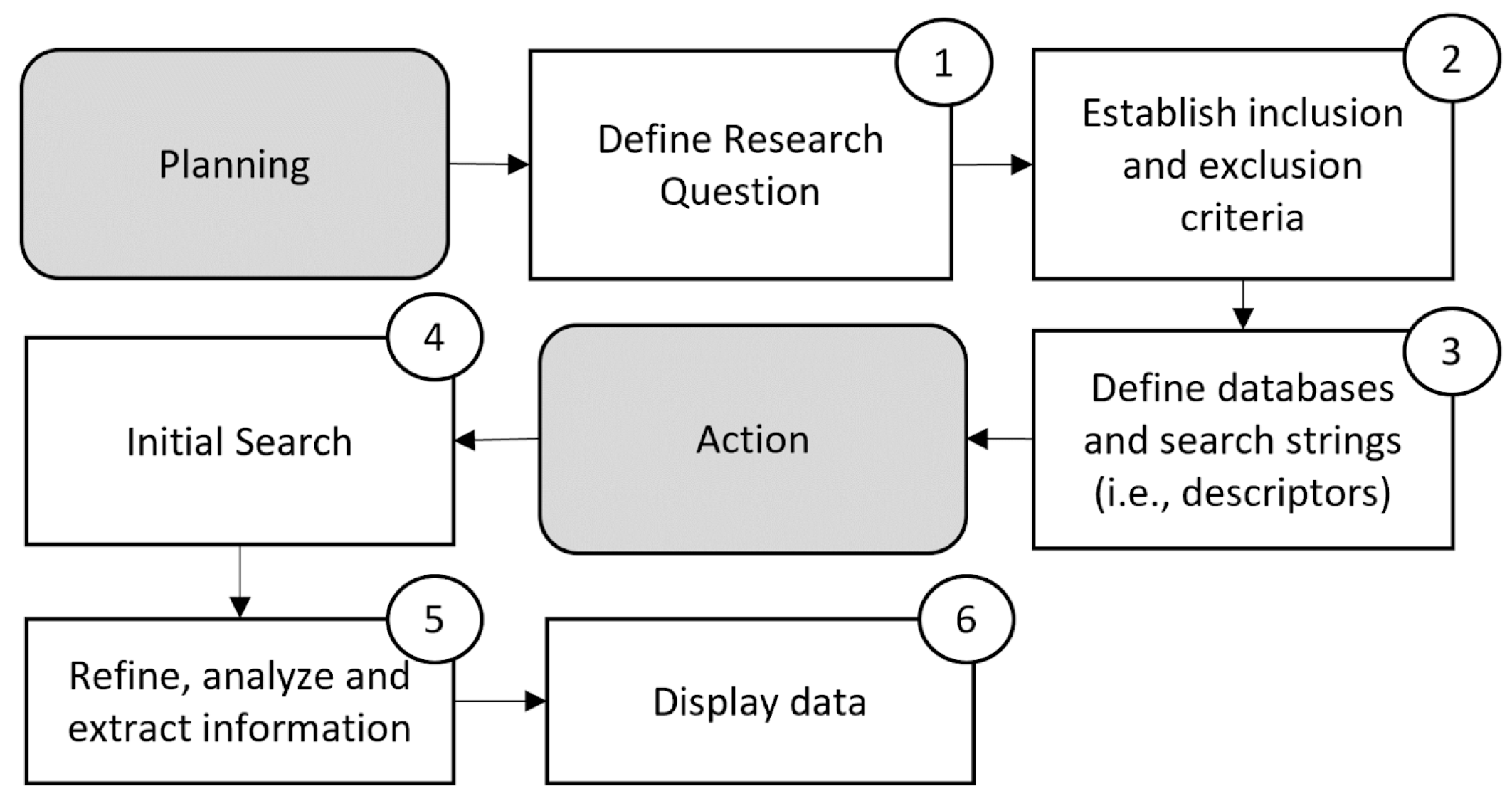
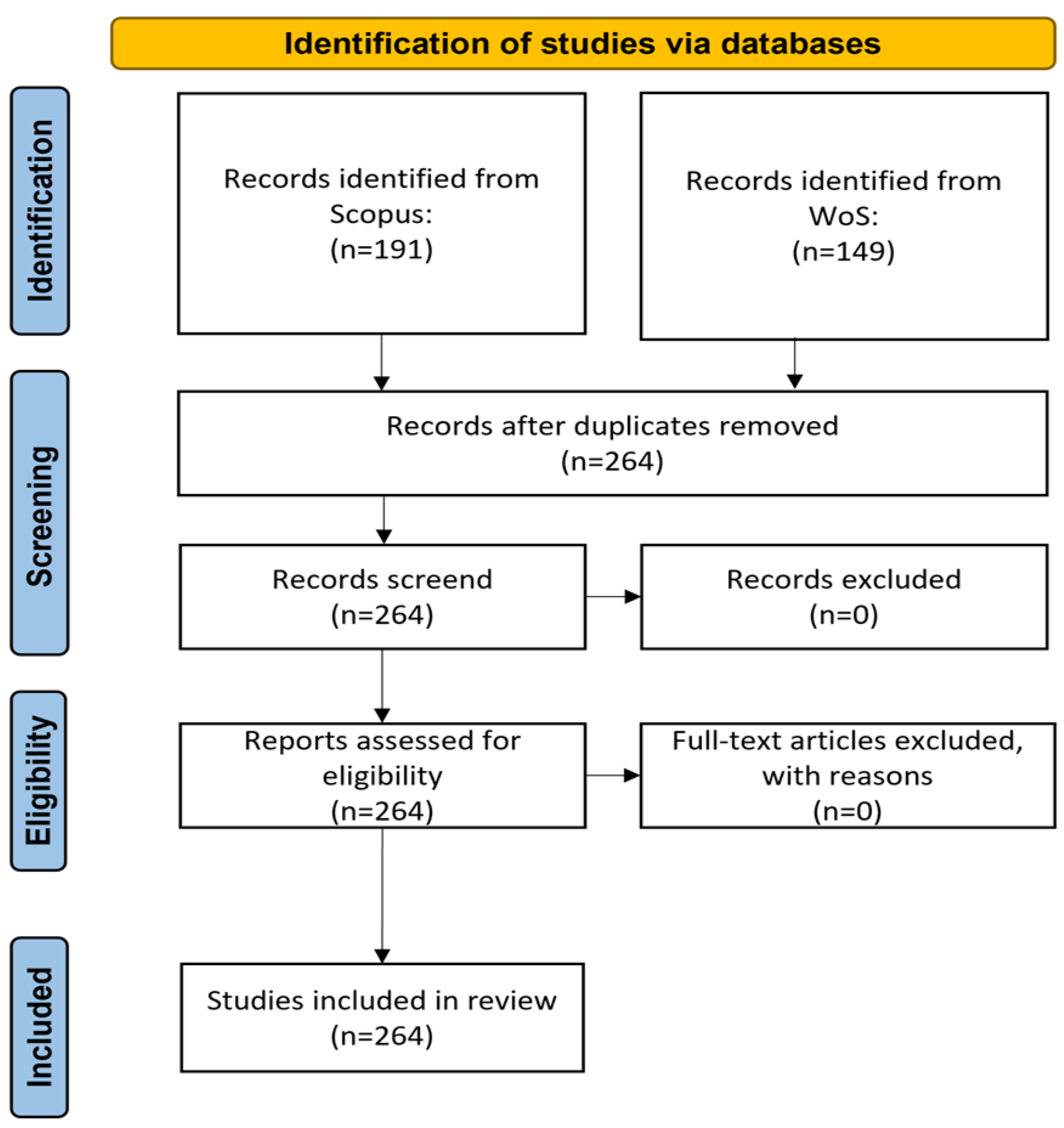
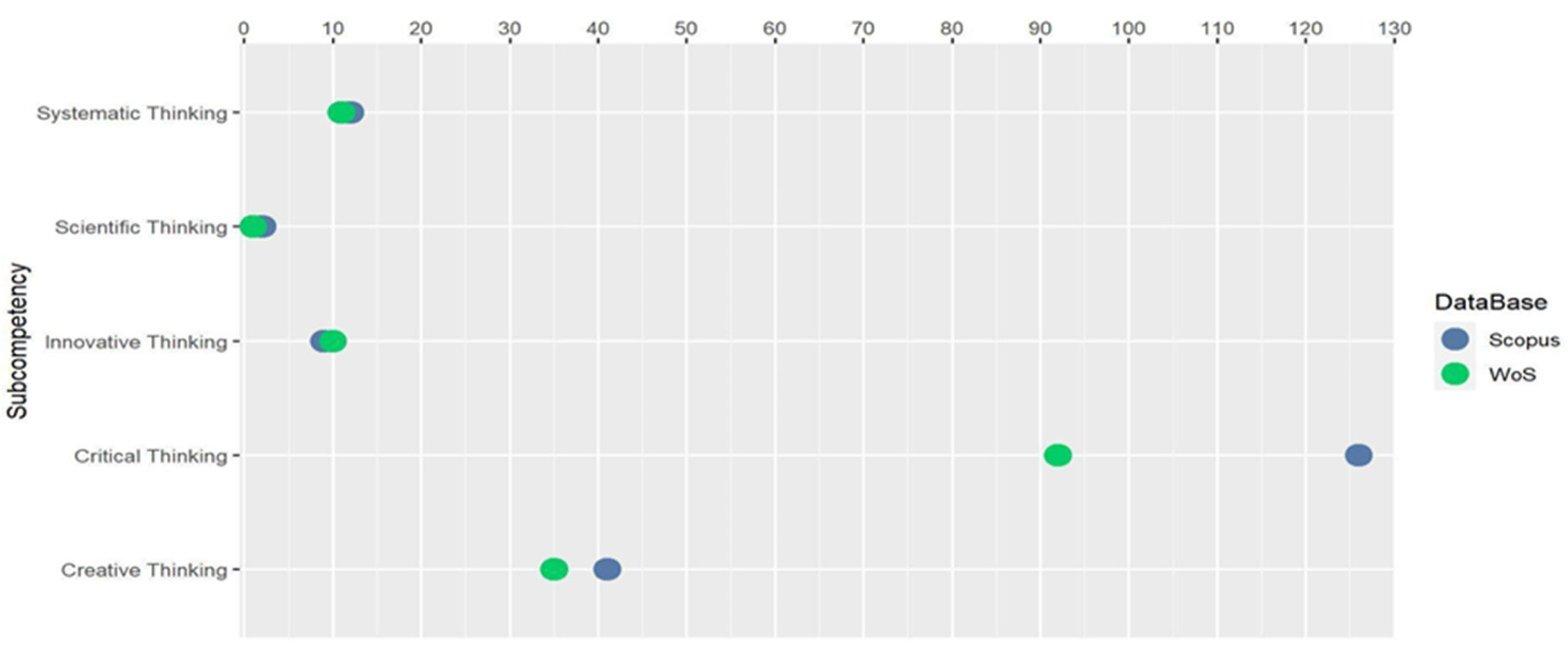

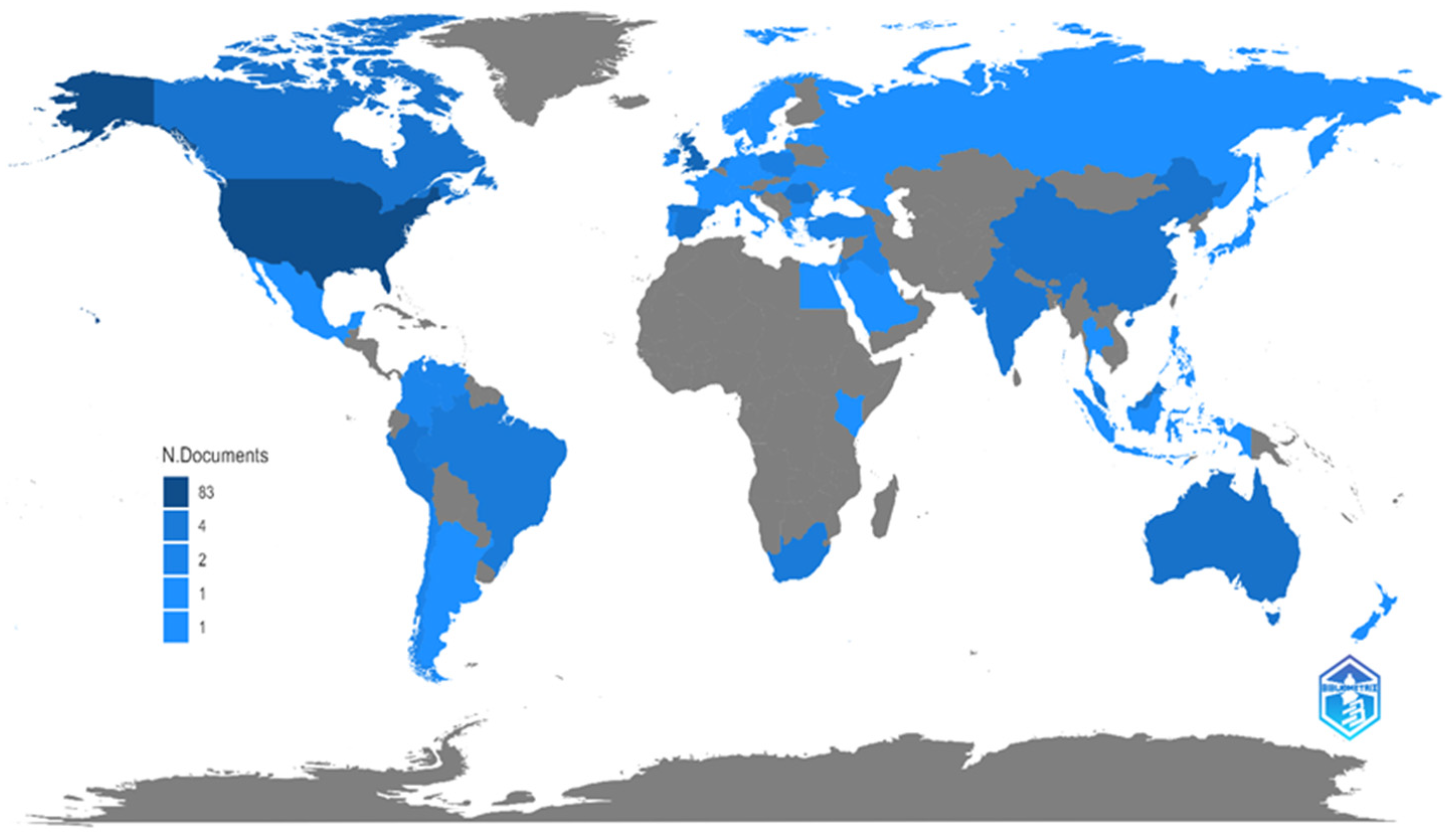
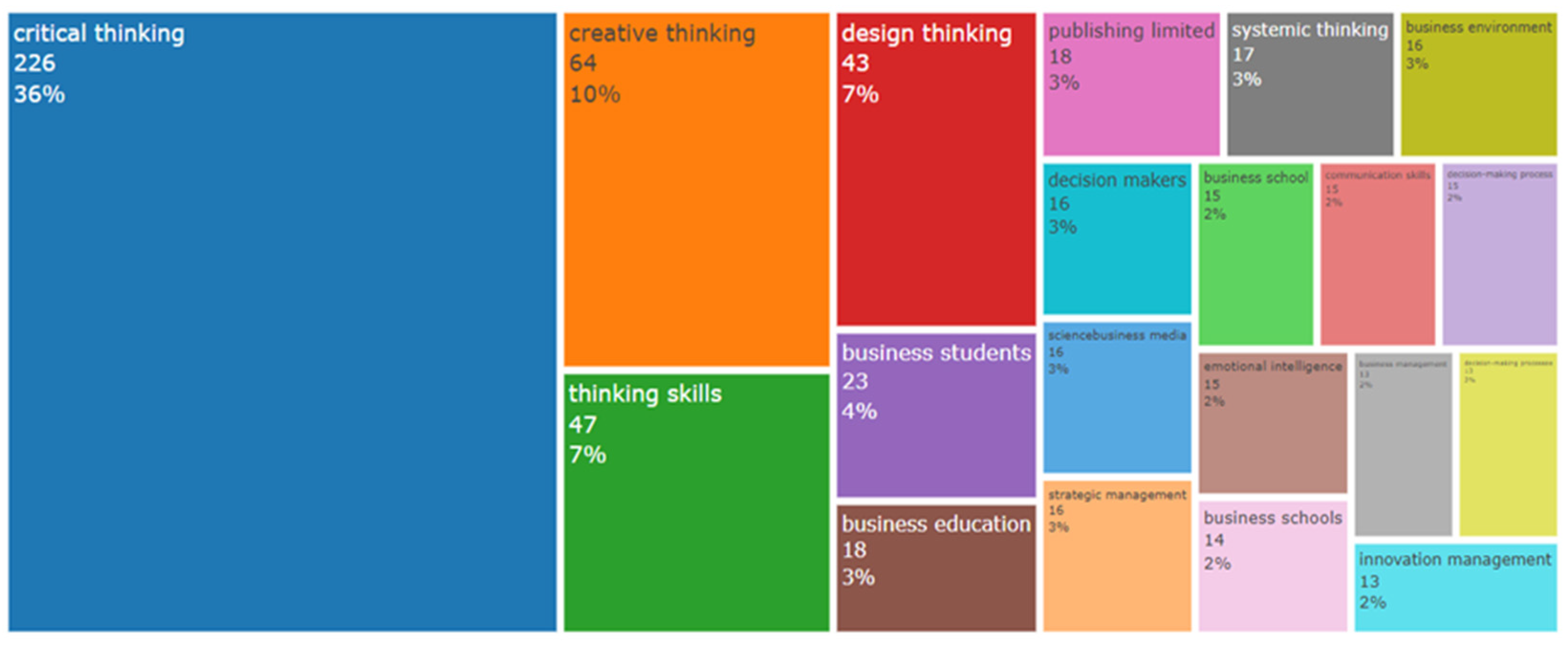
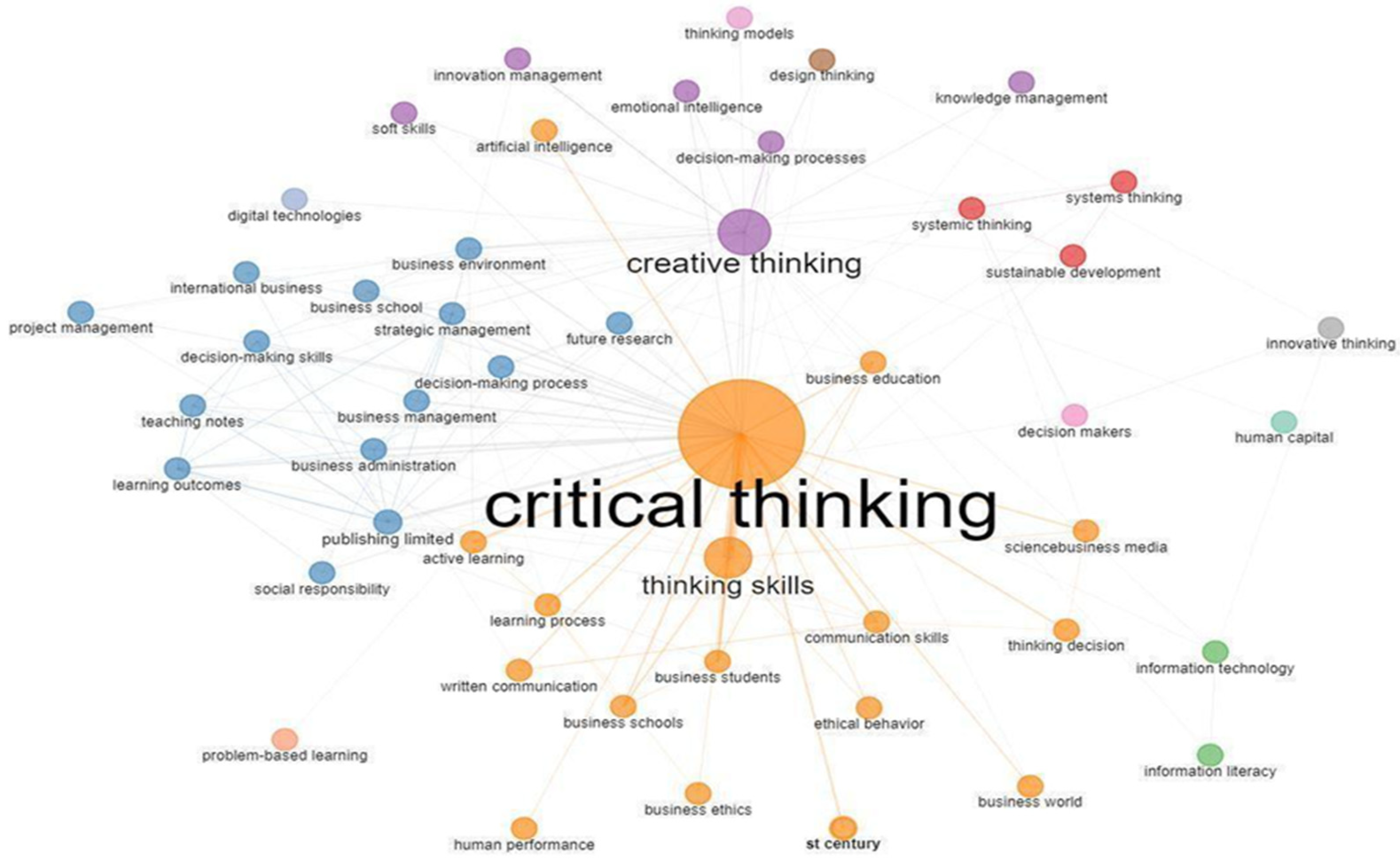
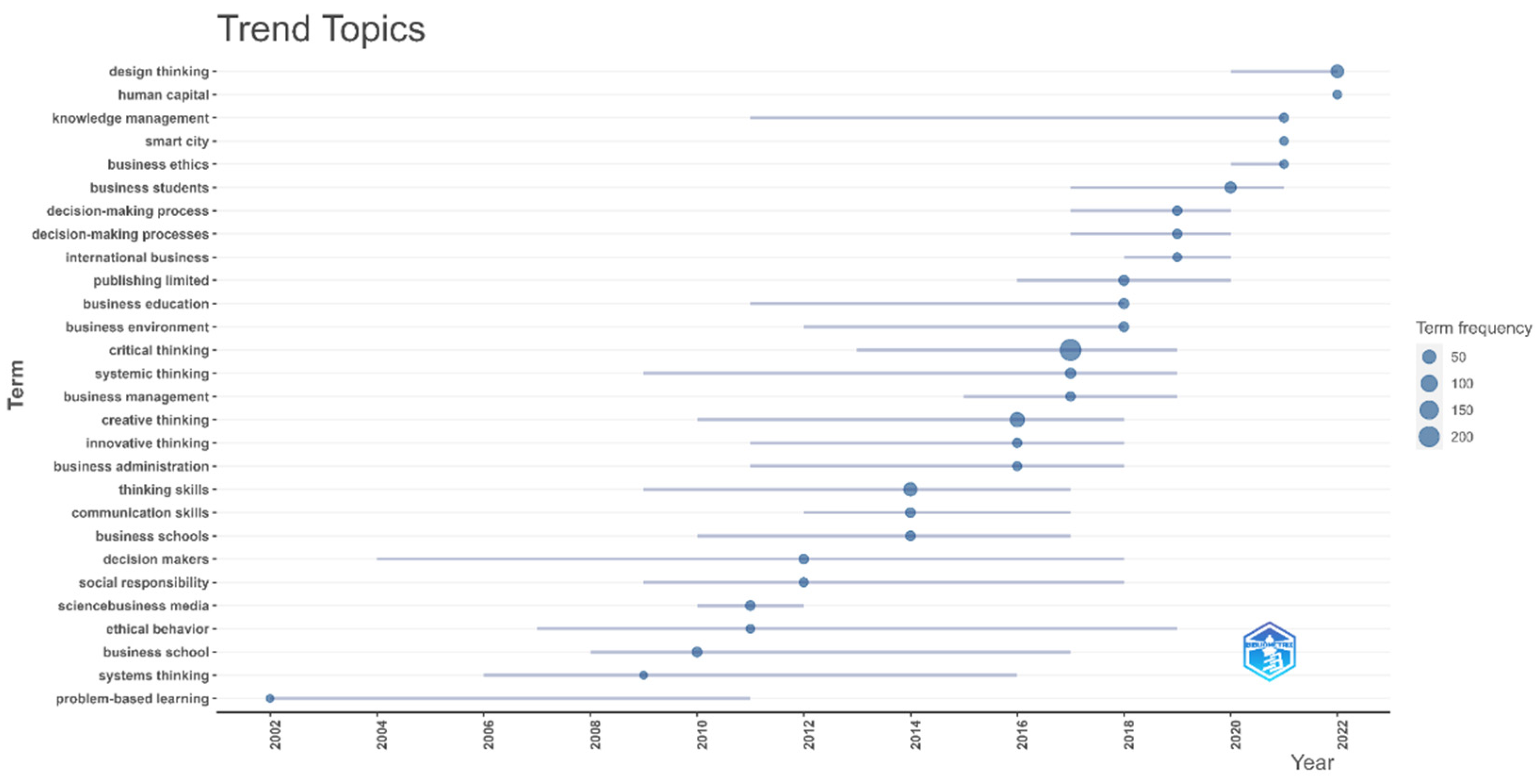
| Dimension | Research Questions | Possible Answer |
|---|---|---|
| Outreach | RQ1. Do the studies the relationship between business decision-making and the competency of complex thinking? | -Yes -No |
| RQ2. Do the studies address the relationship between decision-making and the sub-competencies of complex thinking? | -Yes -No | |
| Approach | RQ3. To which sub-competency of complex thinking is decision-making in business usually related? | -Scientific -Critical -Innovative/Creative -Systemic |
| Metrics | RQ4. What is the amount of published material on competitive business decision-making? | -Number of publications per year |
| RQ5. Which institutions have produced the most products on business decision-making related to the complex thinking competency and its sub-competencies? | -University institutions | |
| RQ6. Which countries have the largest number of papers published that address business decision-making with the complex thinking competency or one of its sub-competencies? | -Country | |
| RQ7. What are the main terms or keywords in the studies? | -Keywords -Co-occurrence network. | |
| RQ8. What has been the trend of terms or keywords in the studies over time? | -keyword trend by year. |
| Inclusion Criteria | Exclusion Criteria |
|---|---|
| Publications indexed in SCOPUS and Web of Science (WoS) databases. | Publications that are not indexed in the SCOPUS and Web of Science (WoS) databases. |
| Publications contain the following terms in their title, abstract, and keywords: Enterprise, decision-making, complex thinking, scientific thinking, critical thinking, creative thinking, innovative thinking, and systems thinking. | Publications that do not include the following terms in their title, abstract, or keywords: Business, decision making, complex thinking, scientific thinking, critical thinking, creative thinking, innovative thinking, systems thinking. |
| Element 1 | Element 2 | Competency | SCOPUS | Web o Science (WoS) |
|---|---|---|---|---|
| Decision making | Business | -“Complex thinking” -“Scientific thinking” -“Critical thinking” -“Creative thinking” -“Innovative thinking” -“Systemic thinking” | (TITLE-ABS-KEY (Element 1) AND TITLE-ABS-KEY (Element 2) AND TITLE-ABS-KEY (Competency) | Element 1 + Element 2 + Competency |
| Search Chain | Database | Publications |
|---|---|---|
| “Business” and “decision making” and “complex thinking” | Scopus (191) | 1 |
| WoS (149) | 0 |
| “Decision Making” + “Business” + “Sub-Competency” | ||
|---|---|---|
| “Sub-Competency” | SCOPUS | WoS |
| Scientific thinking | 2 | 1 |
| Critical thinking | 126 | 92 |
| Innovative thinking | 9 | 10 |
| Creative thinking | 41 | 35 |
| Systemic thinking | 12 | 11 |
| Total: | 190 | 149 |
| Institution | Country |
|---|---|
| Georgetown University Medical Center | United States of America |
| Harvard University | United States of America |
| James Madison University | United States of America |
| Michigan State University | United States of America |
| Mount Sinai School of Medicine | United States of America |
| Ohio Northern University | United States of America |
| University of Cape Town | South Africa |
| University of California | United States of America |
| University of Maribor | Slovenia |
Disclaimer/Publisher’s Note: The statements, opinions and data contained in all publications are solely those of the individual author(s) and contributor(s) and not of MDPI and/or the editor(s). MDPI and/or the editor(s) disclaim responsibility for any injury to people or property resulting from any ideas, methods, instructions or products referred to in the content. |
© 2023 by the authors. Licensee MDPI, Basel, Switzerland. This article is an open access article distributed under the terms and conditions of the Creative Commons Attribution (CC BY) license (https://creativecommons.org/licenses/by/4.0/).
Share and Cite
Pacheco-Velázquez, E.A.; Vázquez-Parra, J.C.; Cruz-Sandoval, M.; Salinas-Navarro, D.E.; Carlos-Arroyo, M. Business Decision-Making and Complex Thinking: A Bibliometric Study. Adm. Sci. 2023, 13, 80. https://doi.org/10.3390/admsci13030080
Pacheco-Velázquez EA, Vázquez-Parra JC, Cruz-Sandoval M, Salinas-Navarro DE, Carlos-Arroyo M. Business Decision-Making and Complex Thinking: A Bibliometric Study. Administrative Sciences. 2023; 13(3):80. https://doi.org/10.3390/admsci13030080
Chicago/Turabian StylePacheco-Velázquez, Ernesto Armando, José Carlos Vázquez-Parra, Marco Cruz-Sandoval, David Ernesto Salinas-Navarro, and Martina Carlos-Arroyo. 2023. "Business Decision-Making and Complex Thinking: A Bibliometric Study" Administrative Sciences 13, no. 3: 80. https://doi.org/10.3390/admsci13030080
APA StylePacheco-Velázquez, E. A., Vázquez-Parra, J. C., Cruz-Sandoval, M., Salinas-Navarro, D. E., & Carlos-Arroyo, M. (2023). Business Decision-Making and Complex Thinking: A Bibliometric Study. Administrative Sciences, 13(3), 80. https://doi.org/10.3390/admsci13030080









